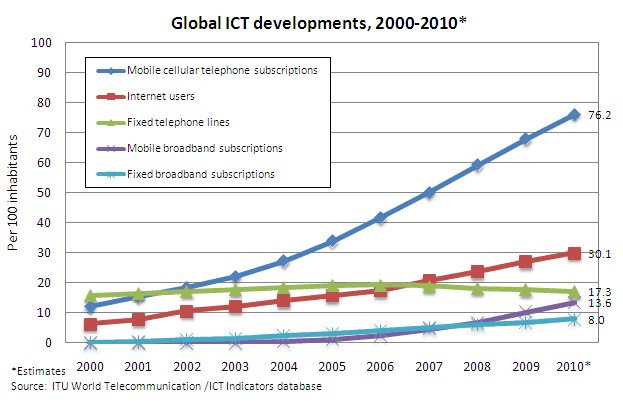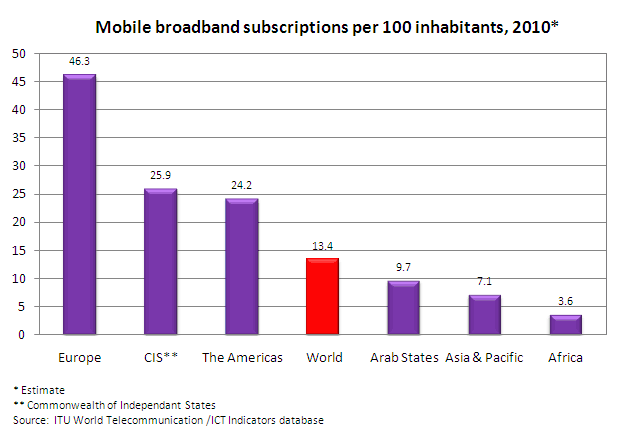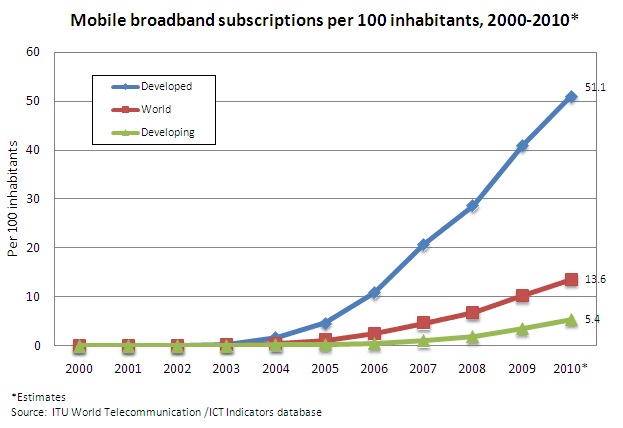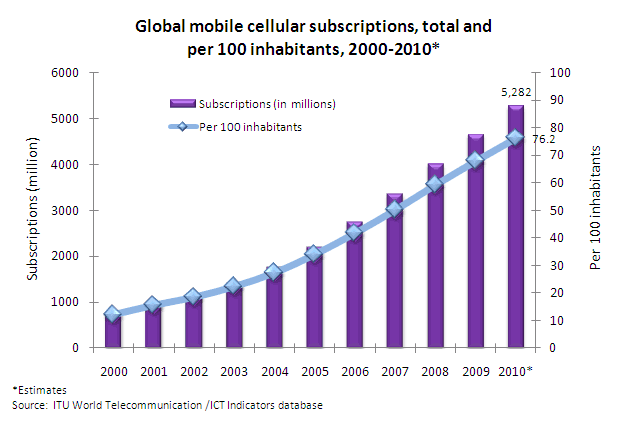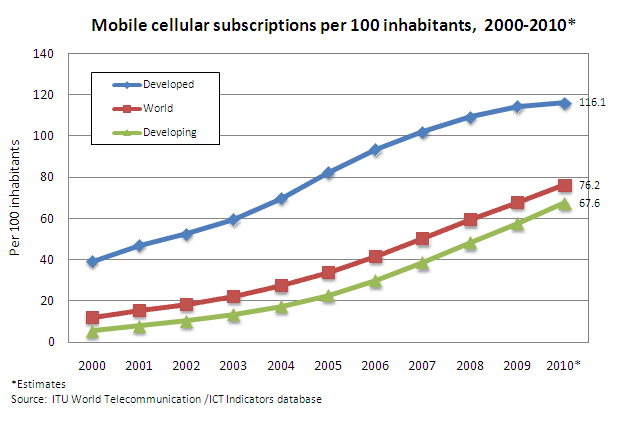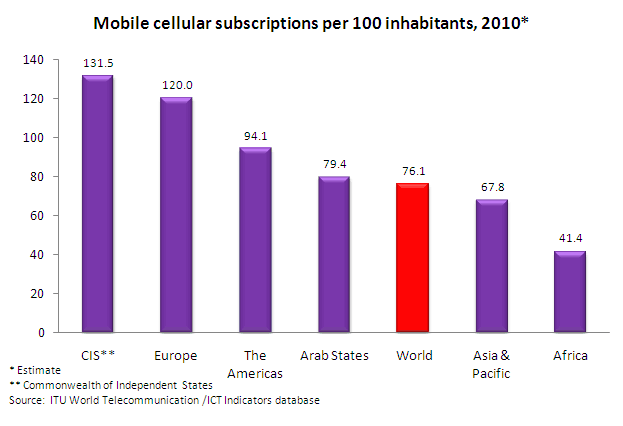Europe leads the world in mobile broadband penetration with nearly twice the subscribers per 100 inhabitants than that of The Americas and the Commonwealth of Independent States (CIS). The CIS leads all areas surveyed in mobile cellular subscriptions with over 130% penetration, according to a recent survey by the ITU.
Global Telecommunications Trends
Overall, the growth of mobile cellular and mobile broadband subscribers is growing faster than fixed telephone lines and fixed broadband subscribers respectively. In fact, while mobile cellular penetration has grown to 76.2% in 2010, fixed telephone lines actually dropped to 17.3% penetration worldwide. Similarly, mobile broadband subscribers are growing faster than fixed broadband lines, with mobile passing fixed in mid-2007 (see Figure 1)
Figure 1: Global Telecommunication Trends 2000-2010
Source: ITU
European Mobile Broadband Penetration Leads World
Leading this trend towards wireless data communication, Europe has nearly twice the penetration as the Americas with 46.3% mobile broadband subscribers per 100 inhabitants, compared to 24.2% penetration in the Americas (see Figure 2).
Figure 2: Mobile Broadband Subscriptions per 100 Inhabitants 2010
Source: ITU
Mobile Broadband Penetration Growth
The developed world is showing rapid growth of mobile broadband adption, with 51.1% penetration as of late 2010 (see Figure 3). The worldwide average is 13.6% mobile broadband penetration, while developing countries have 5.4% penetration.
Figure 3: Mobile Broadband Penetration Growth 2000-2010
Source: ITU
Worldwide Cellular Trends
Worldwide, cellular subscribers are growth at 13.5% a year from 4,651 million to 5,281 million in 2009 to 2010 respectively (see Figure 4). Global cellular subscriptions per 100 inhabitants went from 67.9 in 2009 to 76.2 in 2010. Ignoring multiple cellular subscriptions per inhabitant, about 3/4 of the world has a cell phone.
Figure 4: Global Cellular Subscriptions and Penetration from 2000 to 2010
Source: ITU
Mobile Cellular Adoption Growth
Digging a bit deeper into the data, the developed world had 116.1 cellular subscriptions per 100 inhabitants (see Figure 5), while the world had 76.2 subscribers per 100 inhabitants, and developing countries had 67.6 subscribers per 100 inhabitants in 2010 (see Figure 5).
Figure 5: Mobile Cellular Adoption Growth from 2000 to 2010
Source: ITU
Commonwealth of Independent States Leads World in Cellular Penetration
The CIS leads the world in cellular with 131.5 subscirbers per 100 inhabitants in 2010 (see Figure 6). Europe follows in second at 120% cellular penetration, followed by the Americas at 94.1%, and the Arab States at 79.4% penetration.
Figure 6: Mobile Cellular Subscriptions per 100 inhabitants by area 2010
Source: ITU
Conclusion
This survey data shows that mobile cellular subscribers have nearly reached saturation levels in Europe and the Commonwealth of Independent States, while the Americas have a ways to go for cellular saturation. With the developed world appearing to level off at 116% penetration, cell phones appear ubiquitous in developed nations. Mobile broadband is still growing strong, with a higher growth rate than that of fixed broadband subscribers. Europe leads the world in mobile broadband penetration with 46.3% penetration, while the Commonwealth of Independent States leads the world in cellular penetration at 131%.
Further Reading
- Nearly Two-Thirds of US Broadband Subscribers are Wireless
- Most broadband subscribers in the US are wireless, according to a recent survey. The United States ranks 9th worldwide in wireless broadband penetration.
- ITU
- Provided the data used in this report.

